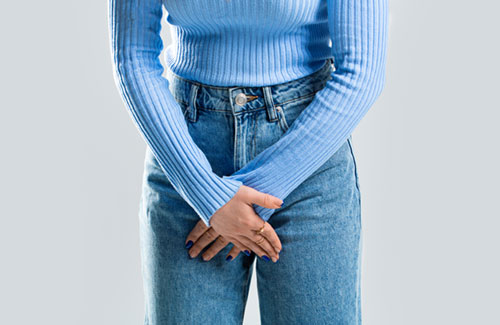The 8th of March has held great significance as International Women’s Day. In fact, World Kidney Day falls on the 9th of March. So, this March, let us march towards women’s health and awareness armed with knowledge.

So, what do we understand by the terms urinary urgency and urinary incontinence? Urgency is a sudden intense desire to pass urine, where the patients feel that they may leak urine if they do not empty their bladders immediately. Urinary incontinence (UI) is the involuntary leakage of urine, i.e., a person is unable to control the passing of urine in certain situations due to issues with bladder control. While it is more commonly heard that women suffer from incontinence, it can affect men as well. Unfortunately, women tend to suffer from these symptoms in silence due to associated social stigmas, rather than seek medical assistance. We need to understand a few more details about this.
Urinary incontinence can be of various types – urge urinary incontinence, stress urinary incontinence, mixed urinary incontinence and overflow urinary incontinence. Broadly, they may also be divided based on the association of urinary incontinence with time, so it could be continuous urinary incontinence or intermittent.
Urge urinary incontinence occurs when there is a urine leak when the patient has the urge to pass urine, i.e., by the time the patient can reach the restroom to relieve herself, she leaks some urine. This can happen due to urinary infections affecting the bladder, bladder stones, neurological problems where there is an affliction of the brain or spine or nerves, tuberculosis, smaller volume bladders, rarely in bladder cancers but quite often, without any identifiable cause.
Urinary Incontinence
Stress urinary incontinence is seen with intra-abdominal pressure, when a person coughs or strains. The urinary bladder and urethra which are located in the pelvis are usually well-supported by a set of muscles and ligaments. Due to various reasons, there could be inadequate support of the pelvic organs which can lead to a relatively open urethra, hence leading to the loss of control during a rise in abdominal pressure.
Also Read: Urinary Incontinence in the Elderly
Mixed urinary incontinence is when both urge and stress urinary incontinence are seen. Rarely, overflow urinary incontinence may also be seen in women, where a patient has the inability to empty the bladder with the accumulation of urine and the excess urine dribbles out without control. Overflow UI usually occurs when there is a block in the outlet passage, hence leading to excess urine in the bladder without effective emptying. Continuous urinary incontinence is seen when there is abnormal communication between the urinary and genital tract such as vesico-vaginal fistula and uretero-vaginal fistula.
A detailed history and clinical examination are as integral to the management as the investigations, as they can provide clues to the probable cause of UI. Certain blood and urine tests might be needed along with an ultrasound of the kidney-ureter-bladder (KUB) region with post void residual urine and if necessary, a computed tomogram (CT) scan of the KUB region as well. Once a clear picture has been established, the treatment will be done accordingly.
Urinary incontinence can cause a severe distress and social embarrassment to patients with severe drop in quality of life. Based on the severity and type of urinary incontinence, they can be managed conservatively with exercises, behavioural management and medication to more advanced surgical procedures to maintain continence, reinforce the pelvic organ support or repair the abnormal communications.
In conclusion, do not ignore your symptoms, do not suffer in silence or shame and do share your concerns with a specialist.

Dr. Anu Ramesh
Consultant Urologist
Kauvery Hospital Chennai
